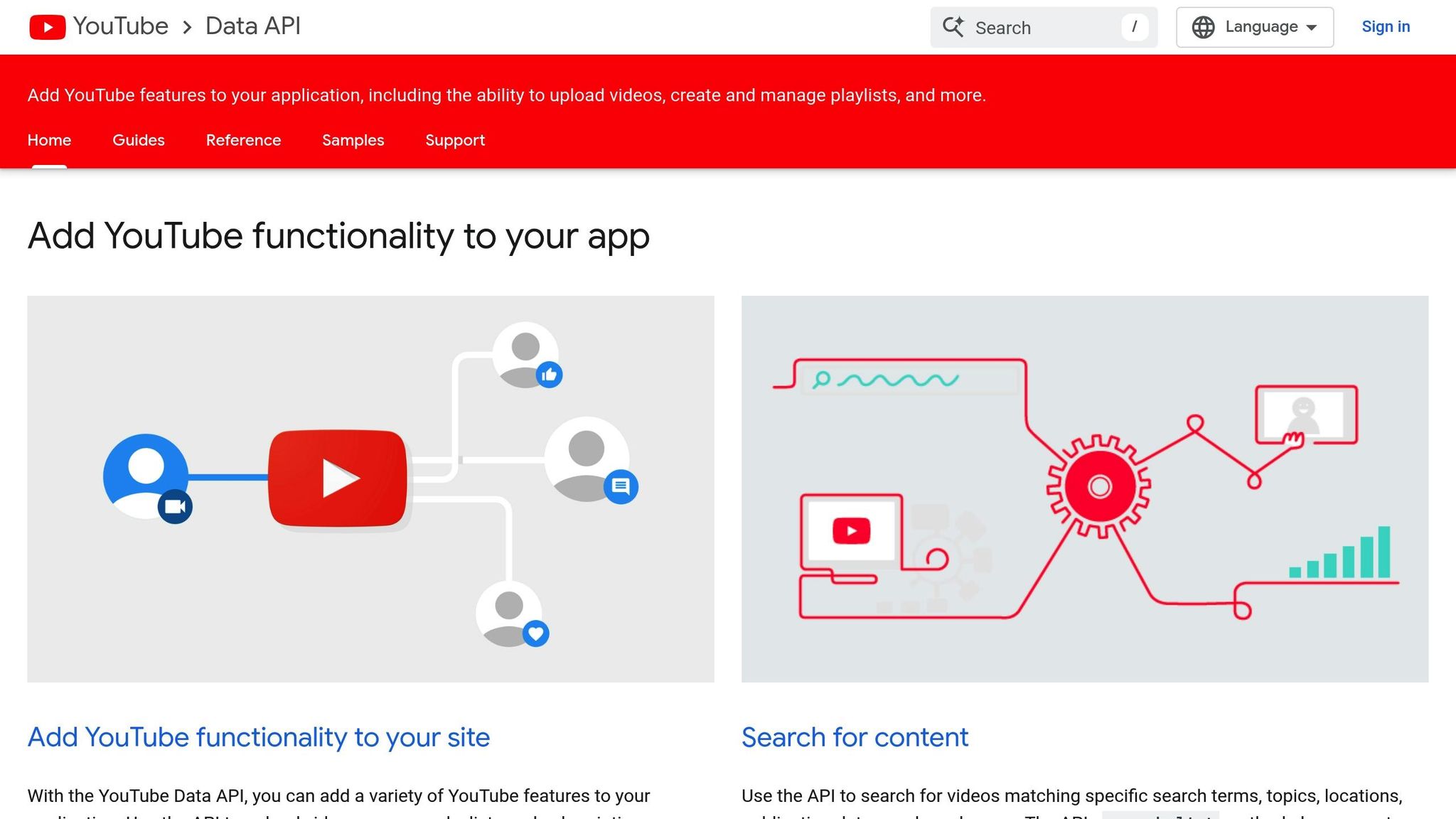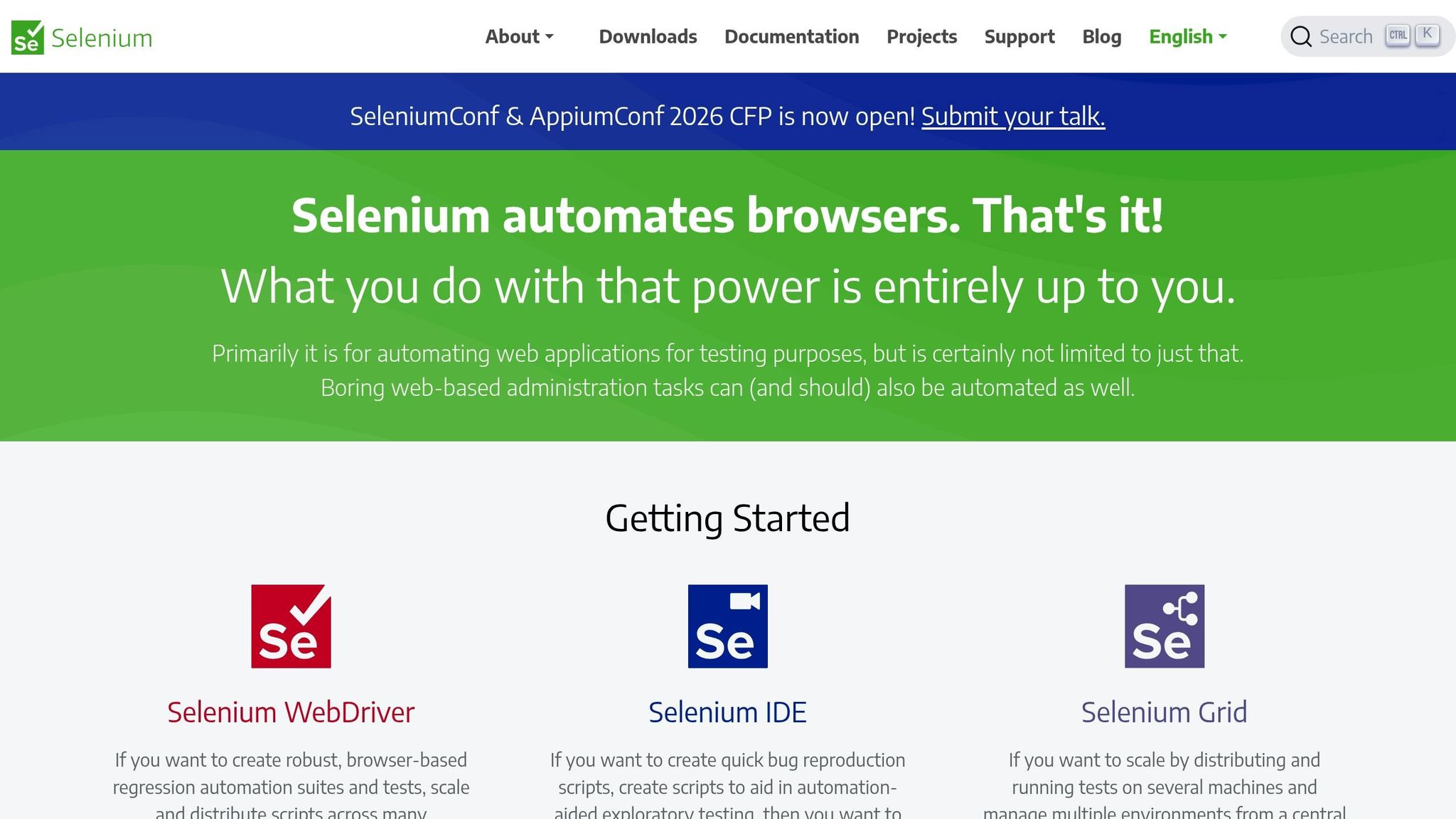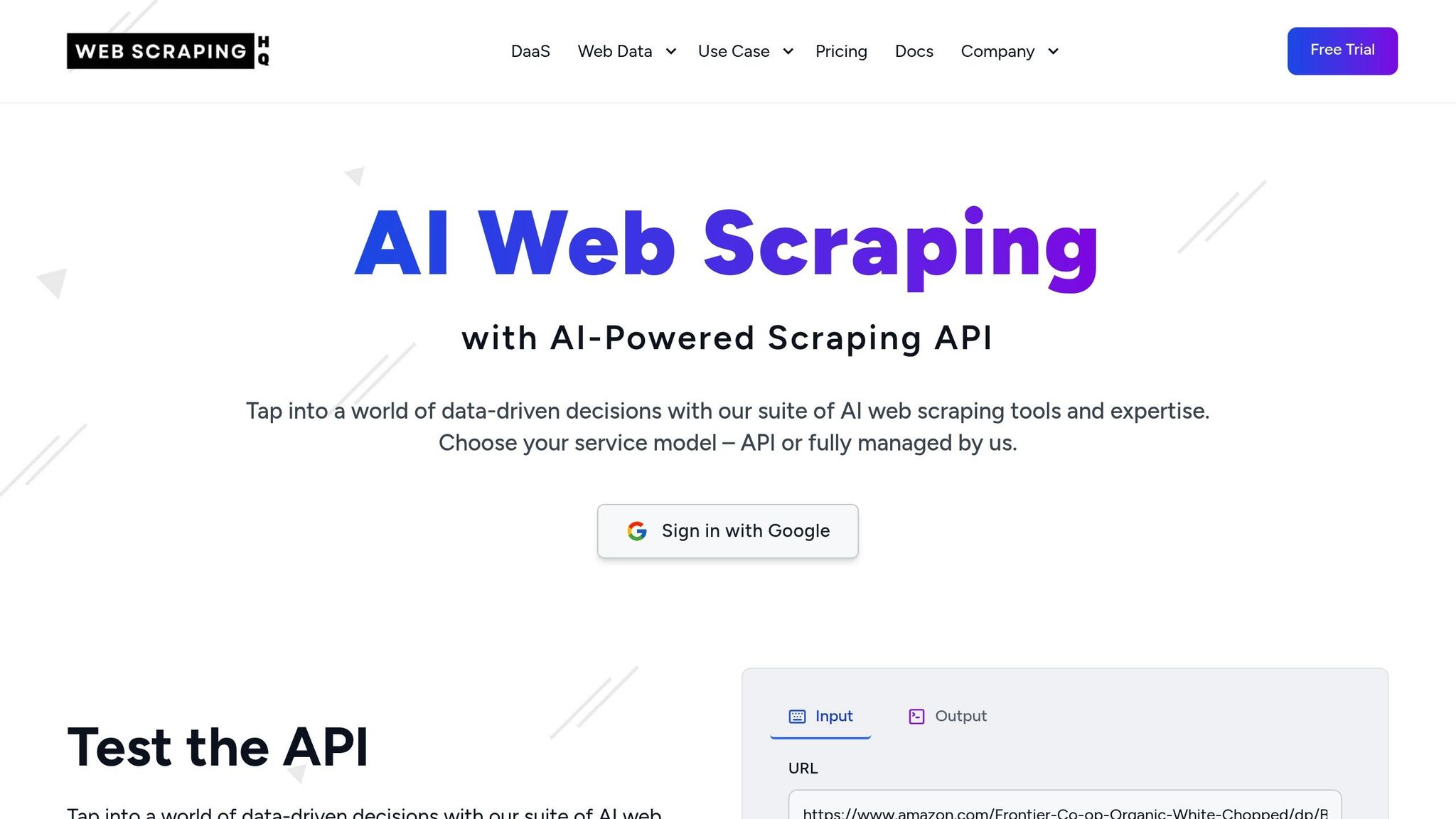
- Harsh Maur
- September 16, 2025
- 8 Mins read
- WebScraping
How to scrape youtube videos?
Scraping YouTube videos means collecting publicly available data like video titles, descriptions, views, likes, comments, and more using automated tools. While YouTube provides an official API for accessing data, its limitations - like usage quotas - lead many users to explore scraping methods. Here's what you need to know:
-
Why scrape YouTube?
Businesses, researchers, and content creators use scraped data for market research, analyzing trends, tracking engagement, and more. -
Legal and ethical considerations:
Scraping publicly available data is generally allowed, but violating YouTube's Terms of Service or copyright laws can lead to issues. Always respect rate limits and avoid private data. -
Popular tools and methods:
- YouTube Data API: Official and compliant but limited by quotas.
- yt-dlp: A Python library for metadata extraction without API keys.
- Selenium + BeautifulSoup: For dynamic content but more complex and resource-intensive.
-
Challenges:
Anti-bot measures, inconsistent data formats, and compliance with privacy laws are common obstacles.
If you're looking for a hands-off option, managed services like Web Scraping HQ handle technical and legal complexities for you. Choose the method that best suits your goals, technical expertise, and compliance needs.
Requirements for YouTube Video Scraping
To scrape YouTube videos effectively, you need a combination of technical know-how and a strong grasp of U.S. legal regulations. This involves setting up the right tools and processes while ensuring compliance with YouTube's policies and applicable laws.
Technical Setup
To begin, you’ll need a solid Python environment. Make sure Python 3.8 or higher is installed, along with pip for managing packages. Key libraries include:
-
requests: For handling HTTP operations. -
BeautifulSoup4: For parsing HTML content. -
selenium: Essential for automating interactions with JavaScript-heavy websites.
For scraping YouTube specifically, the yt-dlp library has become the go-to tool since the deprecation of youtube-dl. It’s excellent for extracting metadata and adapting to YouTube’s frequent updates. You can install it with the following command:
pip install yt-dlp
Additionally, FFmpeg is required for video processing tasks, so ensure it’s installed on your system.
If your scraping requires browser interaction, you’ll need Selenium WebDriver. Make sure to install the appropriate browser driver, such as ChromeDriver for Chrome or GeckoDriver for Firefox. Using the latest driver version generally ensures smooth performance.
For those using the YouTube Data API v3, you’ll need to set up a Google Cloud Platform account and generate an API key. Keep in mind that API usage is quota-based: a search operation consumes around 100 units, while fetching video details uses between 1 and 4 units per request.
Organize your scripts with a reliable code editor and version control tools like Git. Virtual environments (using venv or conda) are also highly recommended to manage dependencies and avoid conflicts with other projects.
In terms of hardware, the requirements depend on the scale of your scraping. For smaller operations (under 1,000 videos daily), an 8 GB RAM laptop is sufficient. For larger-scale tasks (10,000+ videos daily), consider using dedicated servers with at least 16 GB of RAM and solid-state drives for faster data processing.
Once your technical setup is ready, it’s critical to ensure your methods comply with legal standards in the U.S.
U.S. Legal Compliance
Scraping YouTube videos comes with legal responsibilities. YouTube's Terms of Service explicitly prohibit automated access that disrupts their operations. However, legal cases like the 2019 hiQ Labs v. LinkedIn decision have shown that scraping publicly available data can sometimes be permissible, depending on the circumstances.
To minimize risks, implement rate limiting in your scraping scripts. This means adding short delays (1–2 seconds) between requests and capping the total number of requests, such as staying below 60 requests per minute from a single IP address. Overloading their servers can not only violate their policies but may also lead to legal repercussions.
When handling data, follow privacy laws like California’s CCPA. Avoid collecting sensitive information such as email addresses, full names, or location data unless absolutely necessary for a legitimate purpose. Instead, focus on public metadata like video titles, descriptions, view counts, and publication dates to reduce privacy concerns.
If you plan to republish or redistribute scraped content, ensure compliance with the DMCA. This includes being prepared to handle takedown requests and keeping detailed records of your data sources to demonstrate good faith if legal issues arise.
Structuring your business appropriately can also help protect you. Many companies form LLCs or corporations to limit personal liability, and Delaware is a popular choice due to its business-friendly legal environment. Consult a technology law attorney to ensure your operations are set up correctly.
Lastly, consider obtaining professional liability insurance that covers technology-related errors and omissions. This can provide an added layer of protection in case of legal challenges arising from your scraping activities.
Always monitor YouTube’s Terms of Service for updates to stay informed and compliant.
How to Scrape YouTube Videos with Python
Python provides several effective ways to scrape YouTube videos, each tailored to different needs and technical requirements. Whether you're looking for structured metadata, flexibility, or handling dynamic content, there's a method to suit your goals. Below, we'll walk through three popular approaches to scraping YouTube videos.
YouTube Data API Method

The YouTube Data API v3 is an official and compliant way to access YouTube video data. It allows you to retrieve structured metadata in JSON format, making it easy to parse and use. This method is particularly useful if you want to stay within YouTube's terms of service.
To get started, you'll need to create a project in the Google Cloud Console, enable the YouTube Data API v3, and generate an API key. Here's an example of retrieving video details:
import requests
import json
def get_video_details(video_id, api_key):
url = "https://www.googleapis.com/youtube/v3/videos"
params = {
'part': 'snippet,statistics,contentDetails',
'id': video_id,
'key': api_key
}
response = requests.get(url, params=params)
data = response.json()
if 'items' in data and len(data['items']) > 0:
video = data['items'][0]
return {
'title': video['snippet']['title'],
'description': video['snippet']['description'],
'view_count': video['statistics']['viewCount'],
'like_count': video['statistics'].get('likeCount', 'N/A'),
'duration': video['contentDetails']['duration'],
'published_at': video['snippet']['publishedAt']
}
return None
# Example usage
api_key = "YOUR_API_KEY"
video_id = "dQw4w9WgXcQ" # Example video ID
video_info = get_video_details(video_id, api_key)
print(json.dumps(video_info, indent=2))
If you need to scrape channel videos, you can use the search endpoint to retrieve up to 50 results per request:
def search_channel_videos(channel_id, api_key, max_results=50):
url = "https://www.googleapis.com/youtube/v3/search"
params = {
'part': 'snippet',
'channelId': channel_id,
'type': 'video',
'maxResults': max_results,
'order': 'date',
'key': api_key
}
response = requests.get(url, params=params)
return response.json()
Keep in mind that free accounts have a daily quota, typically 10,000 units, so plan your requests accordingly.
Selenium and BeautifulSoup Method

For cases where JavaScript rendering is required or when you need data not available through APIs, combining Selenium with BeautifulSoup is a practical solution. This approach simulates browser behavior to retrieve dynamically loaded content.
Here's an example:
from selenium import webdriver
from selenium.webdriver.common.by import By
from selenium.webdriver.support.ui import WebDriverWait
from selenium.webdriver.support import expected_conditions as EC
from bs4 import BeautifulSoup
import time
def web_scraping_youtube_videos(video_url):
# Configure Chrome options for headless browsing
chrome_options = webdriver.ChromeOptions()
chrome_options.add_argument('--headless')
chrome_options.add_argument('--no-sandbox')
chrome_options.add_argument('--disable-dev-shm-usage')
chrome_options.add_argument('--user-agent=Mozilla/5.0 (Windows NT 10.0; Win64; x64) AppleWebKit/537.36')
driver = webdriver.Chrome(options=chrome_options)
try:
driver.get(video_url)
# Wait for the video title element to load
WebDriverWait(driver, 10).until(
EC.presence_of_element_located((By.CSS_SELECTOR, "h1.ytd-video-primary-info-renderer"))
)
# Scroll down to load dynamic content such as comments
driver.execute_script("window.scrollTo(0, 1000);")
time.sleep(3)
# Retrieve and parse the page source
soup = BeautifulSoup(driver.page_source, 'html.parser')
# Extract video title
title_element = soup.find('h1', class_='ytd-video-primary-info-renderer')
title = title_element.get_text().strip() if title_element else "N/A"
# Extract view count
view_element = soup.find('span', class_='view-count')
views = view_element.get_text().strip() if view_element else "N/A"
# Extract channel name
channel_element = soup.find('a', class_='yt-simple-endpoint style-scope yt-formatted-string')
channel = channel_element.get_text().strip() if channel_element else "N/A"
# Return the scraped data
return {
'title': title,
'views': views,
'channel': channel
}
except Exception as e:
print(f"Error during scraping: {e}")
return None
finally:
driver.quit()
Each method has its strengths: the YouTube Data API is great for structured data, yt-dlp offers flexibility and ease of use, and Selenium with BeautifulSoup handles dynamic content effectively. Choose the one that fits your project best!
Scraping Method Comparison
The YouTube Data API is the go-to choice for structured metadata extraction if you can work within its quota limits. It’s a secure and compliant option, making it ideal for businesses focused on long-term reliability.
The yt-dlp library is a strong tool for downloading videos and extracting basic metadata, but you'll need technical expertise to handle anti-bot measures effectively at scale.
Selenium offers full control over scraping visible content but is the most challenging and resource-intensive approach. It requires significant manual effort to bypass YouTube's defenses.
For a more hands-off option, managed scraping services handle everything for you, including proxy rotation and JavaScript rendering. While these services are more expensive, they offer high scalability and reliability, making them a great choice for enterprise-level projects.
Choose the method that best matches your technical expertise, budget, and compliance requirements. Managed services can simplify the process for those who need a robust and scalable solution.
sbb-itb-65bdb53
Web Scraping HQ Managed Services

When tackling the hurdles of YouTube video scraping, Web Scraping HQ offers a managed service that simplifies the process while adhering to legal standards. This solution is designed to take the weight off businesses by handling the technical complexities involved.
Pricing Plans and Features
Web Scraping HQ offers two primary subscription options:
- Standard Plan: Starting at $449 per month, this plan includes structured data delivery, JSON/CSV output formats, automated quality assurance, and expert support. Solutions are typically delivered within five business days.
- Custom Plan: For more advanced needs, the Custom plan starts at $999+ per month and includes features like custom data schemas, enterprise-grade service agreements, flexible output formats, and scalable solutions. This tier also offers priority support, with solutions delivered within 24 hours.
Both plans include legal compliance as a standard feature, addressing the complexities of YouTube video scraping. Additionally, the service provides data samples prior to full implementation, allowing businesses to verify that the output meets their needs.
Web Scraping HQ also offers a free trial, giving businesses the opportunity to test the service before committing to a subscription. For more detailed pricing or tailored solutions, potential customers are encouraged to contact the company directly.
Conclusion
Throughout this guide, we've explored how to choose the best approach for scraping YouTube videos based on your specific needs. Successfully scraping YouTube involves balancing technical requirements, legal considerations, and business objectives. Tools like the YouTube Data API, yt-dlp, and Selenium each cater to different levels of expertise and use cases.
FAQs
Get answers to frequently asked questions.
Yes it is legal to scrape publicly available data from a Youtube website.
Yes, Here are the steps to scrape and download reviews from a YouTube. *Visit to webscraping HQ website *Login to web scraping API *Paste the url into API and wait for 2-3 minutes *You will get the scraped data.
YouTube's Terms of Service prohibits content from unauthorized use, such as unauthorized downloads and scraping.